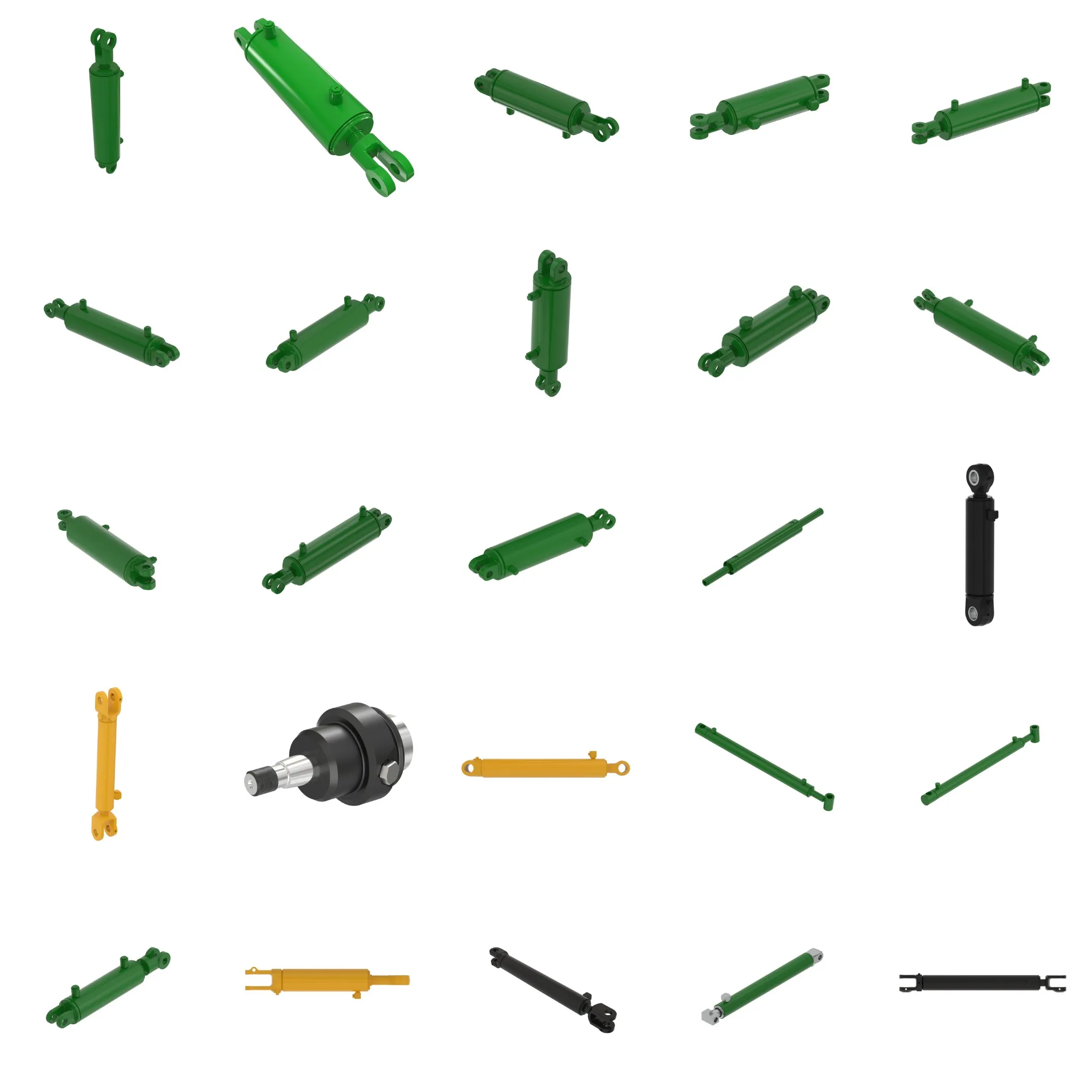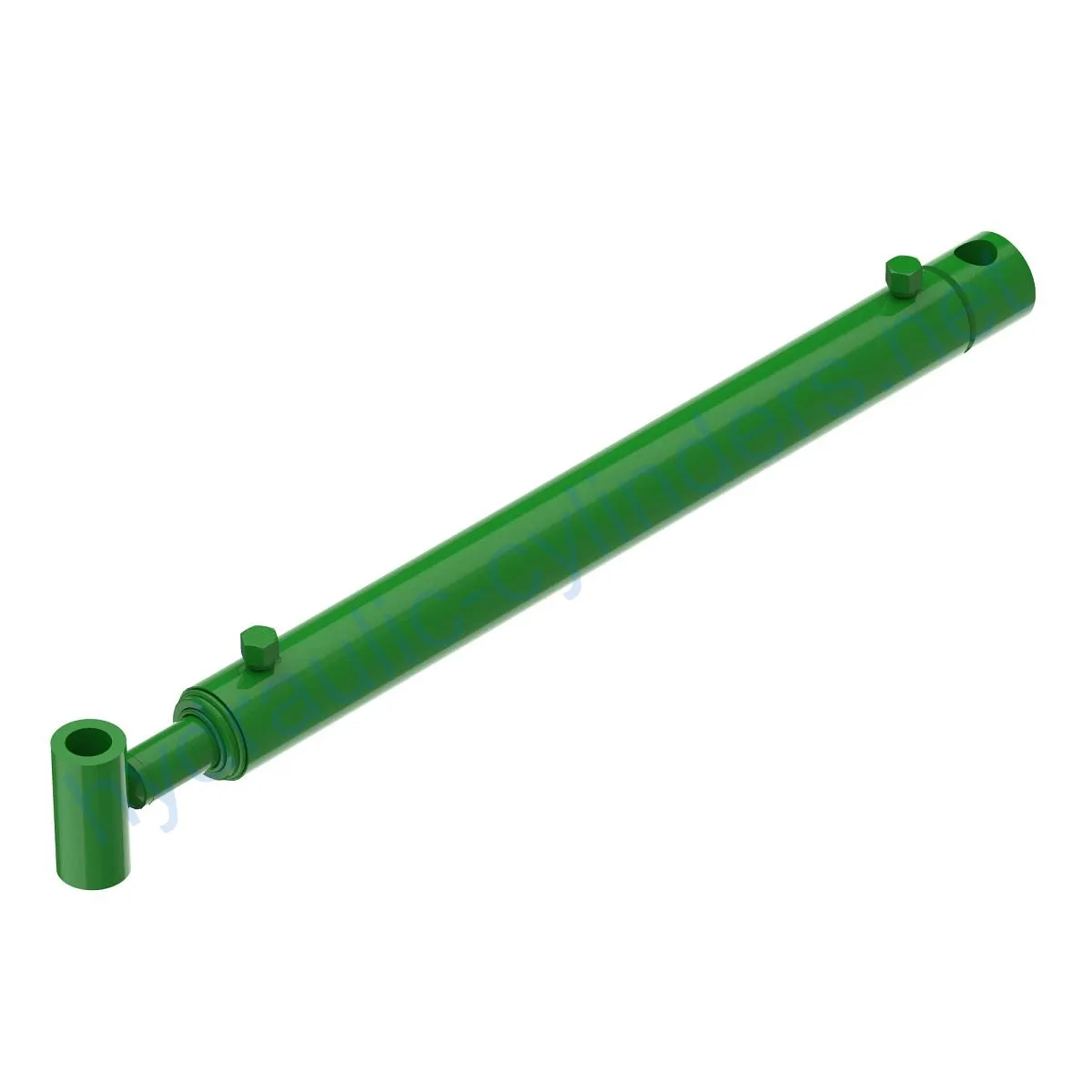Replacement Of AHC13607 Bucket Hydraulic Cylinder
Replacement Of AHC13607 Bucket Hydraulic Cylinder
The Replacement Of AHC13607 Bucket Hydraulic Cylinder is a crucial component in hydraulic systems. It provides the necessary force to move heavy loads and is essential for the proper functioning of various equipment. This hydraulic cylinder is specifically designed to replace the AHC13607 model and is compatible with the 440R H180 machine.
Specifications
- Weight: 19.58 lb
- Height: 2.25 in
- Width: 3.5 in
- Length: 29.4 in
Features
- Improved Equipment Performance: Replacing damaged or worn hydraulic cylinders can restore the normal operation capability of the equipment, ensuring optimal performance in various applications.
- Enhanced Safety: Regularly replacing hydraulic cylinders can reduce safety hazards caused by cylinder failures, ensuring the safety of operators and equipment.
- Overload Protection: The design of new cylinders often includes better overload protection mechanisms, enhancing safety.
- Quick Installation: Modern hydraulic cylinders are designed for easy installation and replacement, minimizing downtime.
- Standardized Components: Many hydraulic cylinders are standardized, making it easier to obtain replacement parts in the market.
Our company specializes in manufacturing replacement hydraulic cylinders that can perfectly replace these hydraulic cylinders. We offer a wide range of products to cater to different equipment models and specifications.
Applications
- Excavators: Hydraulic cylinders in excavator booms or buckets may get damaged due to prolonged use or overload, requiring replacement to restore normal operation.
- Cranes: Hydraulic cylinders in crane boom lifts are prone to wear and tear during frequent lifting and lowering processes, necessitating regular replacement for safety reasons.
- Tractors: Hydraulic cylinders in front-end loader attachments of tractors may experience leaks or performance degradation due to continuous lifting and tilting operations, requiring replacement.
- Harvesters: Hydraulic systems in harvesters endure high pressure during the harvesting process, and cylinders may get damaged due to fatigue, requiring timely replacement to maintain work efficiency.
- Automated Production Lines: Hydraulic cylinders are used to control robotic arms and other automated equipment. Cylinder failures can significantly impact production efficiency, necessitating immediate replacement.
- Die Casting Machines: Hydraulic cylinders in die casting machines may experience performance degradation in high-pressure and high-temperature environments. Regular replacement ensures product quality.
- Mining Equipment: Hydraulic cylinders are used for lifting and moving heavy loads in mining equipment. Due to harsh working conditions, regular inspection and replacement are necessary to avoid equipment failures.
- Bulldozers: Wear of hydraulic cylinders in bulldozer blade arms can lead to decreased pushing capability, requiring timely replacement to maintain operational efficiency.
Regular maintenance and preventive measures are essential to ensure the longevity and optimal performance of hydraulic cylinders. Common maintenance tasks include regular inspections, appropriate lubrication, seal replacements, and calibration checks.
During installation, it is important to provide proper guidance on aligning the cylinder correctly and recommend using suitable installation brackets to secure the cylinder. We also offer recommended inspection, repair, and replacement procedures, as well as parts replacement and rebuilding services to extend the lifespan of the hydraulic cylinder.
Safety considerations and environmental factors play a crucial role when using hydraulic cylinders. Adhering to safety measures while handling hydraulic systems is of utmost importance to prevent accidents and ensure the well-being of operators.
When it comes to troubleshooting and common issues, it is essential to diagnose and address problems promptly. Providing tips and solutions for fault handling can help readers effectively identify and resolve issues. Additionally, offering preventive measures can minimize potential problems.

Design considerations and selection criteria are vital for hydraulic cylinders. Factors such as load-bearing capacity, sealing capability, durability, safety, and serviceability should be thoroughly discussed. These aspects ensure that the chosen hydraulic cylinder meets the specific requirements of the application.
Sealing and lubrication are crucial for the proper functioning of hydraulic cylinders. Various sealing components, such as piston seals and rod seals, are utilized, often made of wear-resistant materials such as polyurethane or nitrile rubber. The cylinder body and threaded ends undergo meticulous surface treatment to enhance wear resistance. Regular lubrication with appropriate hydraulic oil is necessary to ensure smooth operation.
Regular inspections and proactive maintenance measures can prevent potential issues. Proper installation, lubrication, and adjustment are emphasized, providing guidance on aligning the cylinder correctly during the installation process. We recommend using suitable installation brackets to secure the cylinder. Furthermore, we offer tips to inspect, repair, and replace hydraulic cylinder components, along with techniques to extend their lifespan.
For correct installation instructions, please refer to our comprehensive installation guide, which provides step-by-step instructions to ensure a successful installation of the hydraulic cylinder.
Maintenance Tasks
- Regular Inspections: Perform routine inspections to detect any issues or signs of wear.
- Appropriate Lubrication: Ensure proper lubrication to reduce friction and maintain optimal performance.
- Seal Replacement and Calibration Checks: Replace worn seals and perform calibration checks to maintain the cylinder’s sealing integrity and accuracy.
Considering safety measures and environmental factors is crucial when working with hydraulic cylinders. Adhering to safety protocols while using hydraulic cylinders is essential to prevent accidents and minimize risks.
Fault Diagnosis and Common Issues
- Leakage: Examine for any leaks in the hydraulic cylinder system, as they can affect performance and lead to potential failures.
- Slow Operation: Slow or sluggish movement may indicate a problem with the hydraulic cylinder, such as insufficient pressure or internal leakage.
- Excessive Noise or Vibration: Unusual noise or vibration can be a sign of internal damage or misalignment within the hydraulic cylinder.
- Inadequate Force Output: Insufficient force may result from worn seals, internal leaks, or other factors affecting the hydraulic cylinder’s performance.
- Overheating: Elevated temperatures can indicate problems with the hydraulic cylinder or the entire hydraulic system, requiring immediate attention.
Providing troubleshooting tips, solutions, and preventive measures can aid readers in efficiently diagnosing and resolving issues related to hydraulic cylinders. Minimizing potential problems through preventive measures is also essential.

Design considerations and selection criteria play vital roles in determining the performance and reliability of hydraulic cylinders. Key factors such as load-bearing capacity, sealing integrity, durability, safety, and ease of maintenance should be thoroughly evaluated. These considerations ensure that the chosen hydraulic cylinder meets the highest standards and requirements of the application.
Sealing and lubrication are critical aspects of the hydraulic cylinder’s performance and longevity. Utilizing various sealing components, such as piston seals and rod seals, made of wear-resistant materials like polyurethane or nitrile rubber, helps maintain a tight seal. The cylinder body and threaded ends undergo precise surface treatments to enhance wear
参观我们的 VR 工厂
通过以下方式参观我们的 VR 工厂
叉车液压缸如何工作?
液压缸应用:


